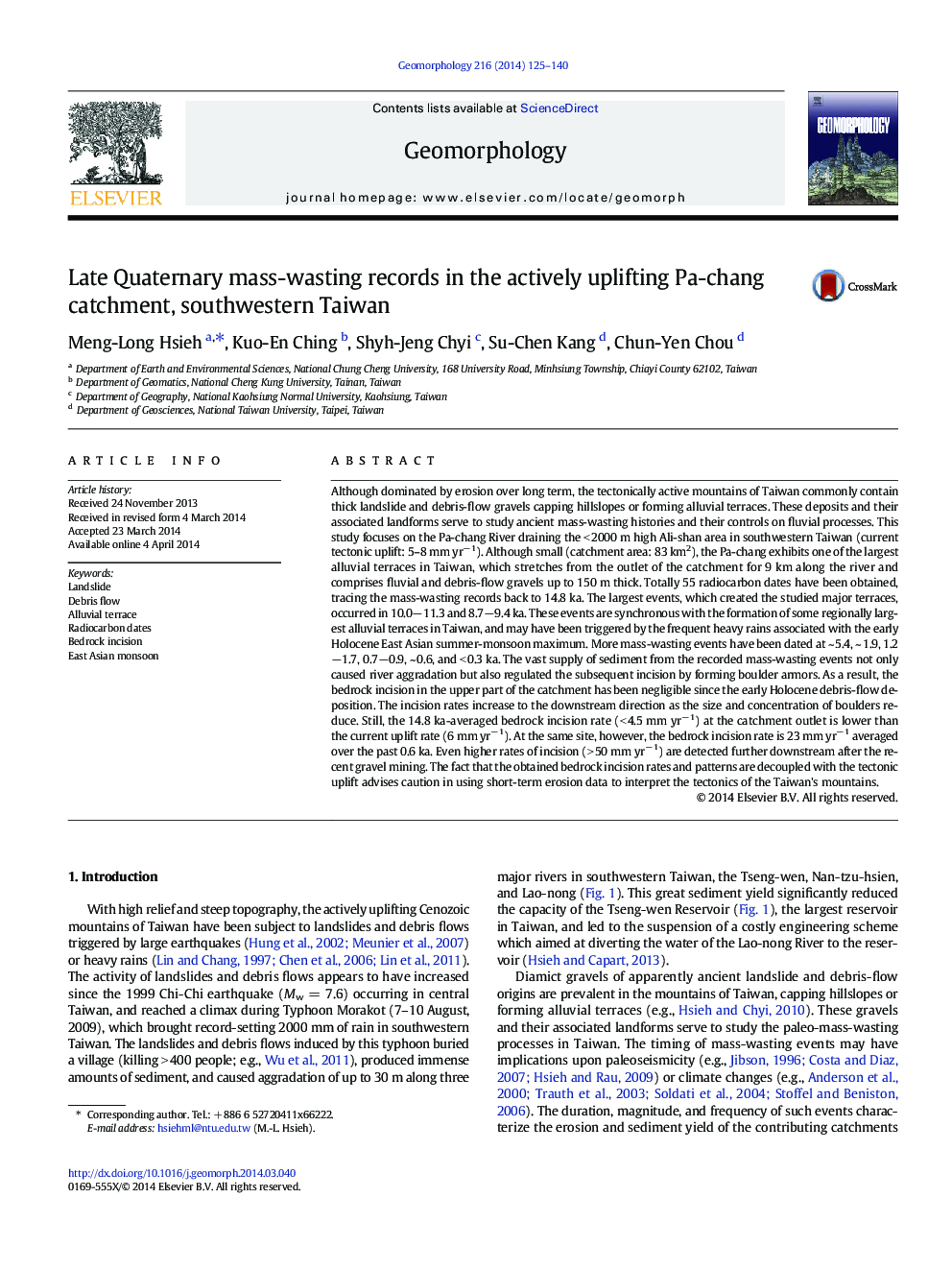| کد مقاله | کد نشریه | سال انتشار | مقاله انگلیسی | نسخه تمام متن |
|---|---|---|---|---|
| 4684519 | 1635433 | 2014 | 16 صفحه PDF | دانلود رایگان |

• Thick mass-wasting gravels are prevalent in the Pa-chang catchment.
• We obtained 55 radiocarbon dates from the mass-wasting sequences.
• The largest mass-wasting events occurred in the early Holocene.
• The mass-wasting processes control river incision/aggradation.
• The bedrock incision rates/patterns are decoupled with tectonic uplift.
Although dominated by erosion over long term, the tectonically active mountains of Taiwan commonly contain thick landslide and debris-flow gravels capping hillslopes or forming alluvial terraces. These deposits and their associated landforms serve to study ancient mass-wasting histories and their controls on fluvial processes. This study focuses on the Pa-chang River draining the < 2000 m high Ali-shan area in southwestern Taiwan (current tectonic uplift: 5–8 mm yr− 1). Although small (catchment area: 83 km2), the Pa-chang exhibits one of the largest alluvial terraces in Taiwan, which stretches from the outlet of the catchment for 9 km along the river and comprises fluvial and debris-flow gravels up to 150 m thick. Totally 55 radiocarbon dates have been obtained, tracing the mass-wasting records back to 14.8 ka. The largest events, which created the studied major terraces, occurred in 10.0−11.3 and 8.7−9.4 ka. These events are synchronous with the formation of some regionally largest alluvial terraces in Taiwan, and may have been triggered by the frequent heavy rains associated with the early Holocene East Asian summer-monsoon maximum. More mass-wasting events have been dated at ~ 5.4, ~ 1.9, 1.2−1.7, 0.7−0.9, ~ 0.6, and < 0.3 ka. The vast supply of sediment from the recorded mass-wasting events not only caused river aggradation but also regulated the subsequent incision by forming boulder armors. As a result, the bedrock incision in the upper part of the catchment has been negligible since the early Holocene debris-flow deposition. The incision rates increase to the downstream direction as the size and concentration of boulders reduce. Still, the 14.8 ka-averaged bedrock incision rate (< 4.5 mm yr− 1) at the catchment outlet is lower than the current uplift rate (6 mm yr− 1). At the same site, however, the bedrock incision rate is 23 mm yr− 1 averaged over the past 0.6 ka. Even higher rates of incision (> 50 mm yr− 1) are detected further downstream after the recent gravel mining. The fact that the obtained bedrock incision rates and patterns are decoupled with the tectonic uplift advises caution in using short-term erosion data to interpret the tectonics of the Taiwan's mountains.
Journal: Geomorphology - Volume 216, 1 July 2014, Pages 125–140